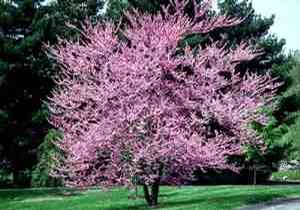Pansy Plant
Category: Shrubs

Facts about Pansy shrub. "Scientific name for pansy plant is Cercis canadensis". Pansy plant is a small tree or a large deciduous shrub with seedpods resembling a weaver shuttle and is usually native to eastern areas of North America including Canada, Southern Ontario, south to northern Florida. However it can also do well in west California. The Pansy plant is commonly known as the eastern redbud and it grows into an understory shrub or tree with multiple trunks and a canopy which extends up to twenty to thirty inches tall with a slightly larger spread upon maturity.
The Pansy shrub develops green foliage with simple, alternately arranged, heart shaped leaves which are broadly ovate and grow up to 2-5 inches long. The leaves have 5 to 7 nerves and are usually truncate at the base and narrow towards the tip. During the early stages of the Pansy shrub, the leaves usually come out in a tawny green color and folded along the mid rib line. However, they become smooth with a dark green color on their outer surface and a lighter color below upon maturity to bright yellow to greenish yellow in fall.
The pansy plant produces pea-like flowers which are rose-purple in color. The flowers usually bloom vigorously in early spring just before the Pansy plants foliage emerges. The blooms are in clusters of four to ten with individual flower growing up to a half an inch wide. The flowers are pollinated to produce leguminous, bean-like seedpods which are flattened and develop to about two to four inches (5 to 10 cm) long with six to twelve seeds in individual seedpods. The seed pods changes color to brown upon maturity and can remain on the Pansy tree into winter.
The plant can do well in medium, average, well-drained soils and in partly shade to full sun. However, the Pansy plant requires partly shade in hot weather conditions
The Pansy plant is a perfect small tree suitable for woodland gardens, lawns or street tree in residential homes. It can be best planted singly or in groups.

 Back To Category Shrubs
Back To Category Shrubs